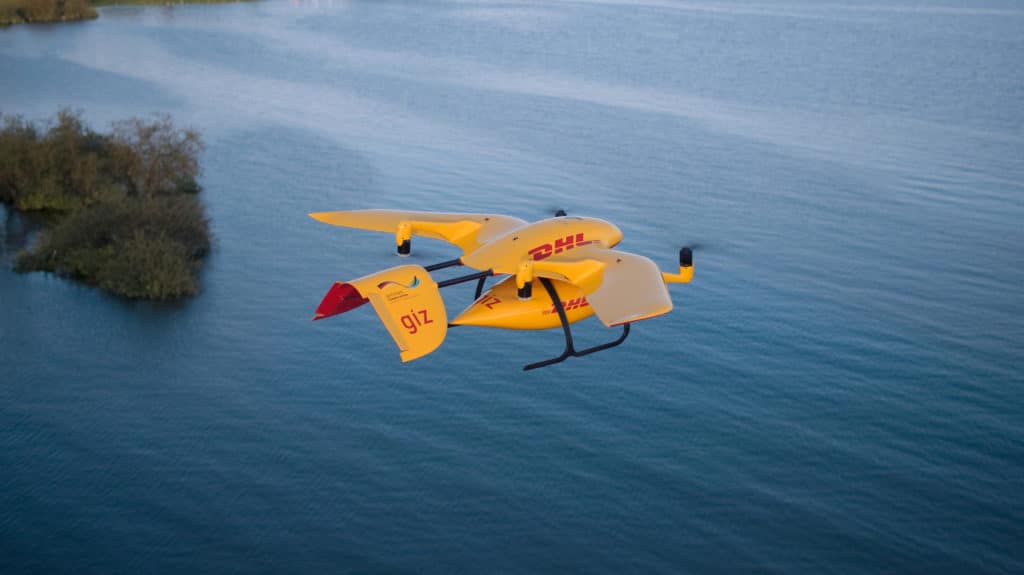Throughout history, the construction industry has seen many innovations. First, machines were invented to reduce the number of laborers needed for specific tasks. Then it was all about computers and 3D mapping for effective planning. Now that drones are becoming a huge part of construction, we’re in a new era.
There are many ways drones can be used in the construction industry. But five things are really important, including planning and design, site analysis, aerial inventory reporting, team reporting, and collaboration. But it’s just the beginning, there’s a brighter future ahead.
Current Drone Applications in Construction
When it comes to the planning of large and complex construction projects it is important that the topographic mapping is done in a professional way to ensure sustainability and to eradicate any and all points of failure. Before drone technology, it was an absolute challenge to get around it but now, not so much. According to a recent analysis, construction agencies have upped drone usage by a whopping 24%.
Drones are used for topographic mapping and hence are a vital element within the construction agency to cut down the cost and time required to complete such a hefty job. Other than that drones are also used to locate equipment within a vast construction site. This allows personnel to track the equipment’s ideal location and to allow for its transportation if it is needed elsewhere. Loss of equipment, failure to relocate equipment to a place of need, and theft lead to delays in meeting deadlines by 18% but could be avoided with the help of drones.
Security is also a very important aspect of the construction industry to ensure that not only the equipment but also the employees on site are 100% covered against physical damages. Drones make it not only easier but simpler as well. The security team could be sitting hundreds of yards away from the main construction site but still be able to view everything that is going about in there. This allows them to prevent damage to the equipment, theft and to keep trespassers at bay.
Advancements in Drone technology
Over the years drones have enjoyed tons of advancements which is the very reason why these devices are in perfect alignment with what the construction industry needs at the moment. Aerial mapping, 3D mapping, surveillance of a specific geographical location, planning of routes along with artificial intelligence and machine learning are some of the newer advancements that have been taking place within the drone industry for a couple of years now.
According to recent research, drones are now offering increased range, storage of data, and integration of drones with surveillance systems. This has led to more patent filings but sadly not many patents are being filed for drones within the construction industry.
Talking about artificial intelligence and machine learning, these technologies have become so subtle within drones that today drones are able to identify possible areas of failure within a particular construction site just by overviewing the site in question from above. They will tell you if the equipment placed on site needs to be moved or changed. And if there are any other breaches of security such as occasional trespassing taking place at the premises.
Facial recognition is also a technology that is being impregnated within surveillance drones. This way managers and security personnel would be able to discern between various employees working on sight and keep a more rigid check on things.
Improved Efficiency and Savings
One of the key benefits of introducing drone technology within the construction industry is the reduction of the cost of the course and labor force required to carry out particular construction-oriented tasks. For example, if you have got yourself a drone you can inspect the whole construction site in a matter of minutes rather than spending days with an abundance of personnel walking up and down the site using cranes, in some illustrations helicopters as well to have a topographic and a real-time footage of the site.
According to a recent report 92% of the construction agencies state that they were able to see a substantial return on investment (ROI) within the first year and for the rest within the first two years.
Within the construction industry, it is important to have exact measurements and dimensions of the site you are working on. Because this way you can finally begin to plan how you want to move along with the project. Otherwise, you are going to lose money and that can be saved with 3D mapping aspects of the drones and initial surveillance done before starting construction.
Enhanced Safety and Risk Mitigation
The construction site consistently requires overseeing. Most of the time it is the duty of construction safety officers to analyze the site from up and down and from north to South. But to do so requires tons of time and an incredible amount of leg work. With the help of drones, it could not only be avoided but you get to have real-time imaging of the complete construction site right before your eyes. Humans are prone to make mistakes, machines on the other hand don’t.
Goldman Sachs has initiated a report according to which drones can help in reducing the cost of security patrols by 90%. As for the recent report initiated by the National Insurance Crime Bureau, construction companies are losing $1 billion annually due to theft and vandalism.
With the help of drones, you also get to keep an eye on all of your workers and make sure that all of them are in compliance with these safety protocols enforced by the construction agency. Constant surveillance via drones can help in the reduction of vandalism and theft by alerting security personnel.
Regulatory Considerations and Challenges
All the data presented above makes you want to use drones right away for your next or present construction work but there is a catch here. Before you can use drones for aerial photography and mapping of your construction site it needs to be registered with the Federal Aviation Administration (FAA) and proper paperwork needs to be signed by the personnel who are going to fly the drone and in some cases their qualifications or relevant certification are also required.
You would also be required to address the authorities beforehand when you begin aerial navigation or scanning of your construction site to address the privacy concerns of other people and to be in close collaboration with the Federal Aviation Authority regarding the privacy rights of other citizens. Those places which fall under the guidelines for airspace restrictions must be avoided at all costs or otherwise, there are going to be penalties which you would be facing.
The Future of Drones in Construction
When it comes to the future of drone technology it is not only bright but promising as well. In the coming years, there would be some amazing features made available for drone technology in correspondence with the construction industry. Some sort of automation is already going on where drone technology could be linked with third-party software systems to apply a more rigorous and autonomous construction framework that benefits not only the managers, and construction workers but also the construction companies.
In the future, the artificial intelligence and machine learning aspects of drone technology would also be getting a complete revision allowing construction workers to be able to do more while keeping the cost within a decent range.
Conclusion
Drones have significantly impacted the construction industry by improving security, risk mitigation, communication, collaboration, and safety. They have proven to be a cost-effective and efficient tool for collecting data, surveying sites, and sharing real-time information with stakeholders.
According to a report by Goldman Sachs, the use of drones in construction is expected to grow by over 200% in the next few years. Furthermore, a report by MarketsandMarkets estimates that the market for drones in construction will be worth $11.96 billion by 2027.
As technology continues to advance and the demand for sustainable, efficient, and safe construction practices grows, it is clear that drones will play an increasingly vital role in the industry’s future.




